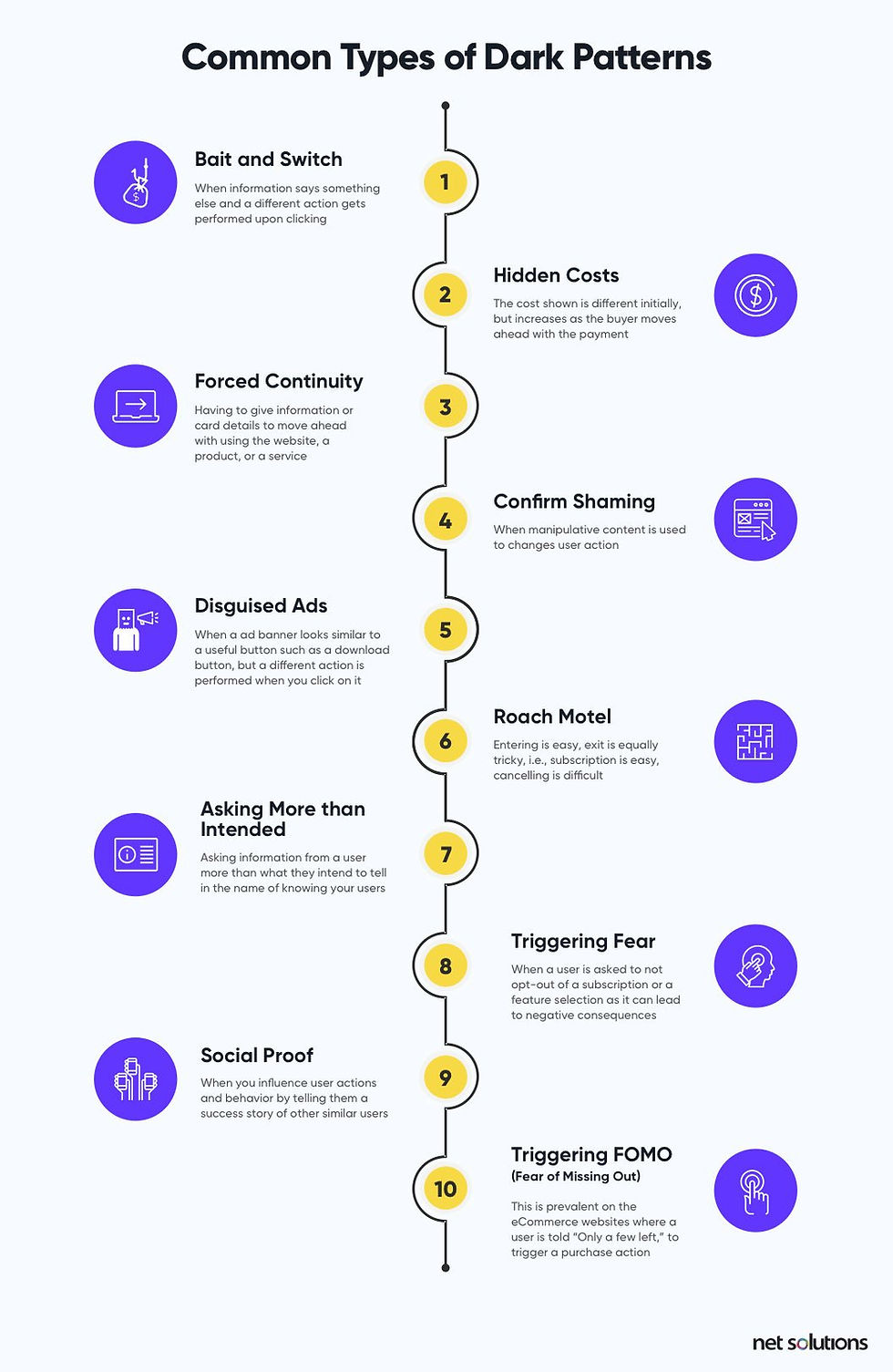Unsafeguarded UI
- CharmCityCoach

- Apr 2, 2024
- 2 min read
Updated: Apr 2, 2024

Gaming by Design
"How Dark UI Patterns Exploit Players' Psyche"
In the world of modern gaming, where players immerse themselves in epic adventures and breathtaking landscapes, there exists a shadowy underbelly that often goes unnoticed: the pervasive use of Dark UI Patterns. These insidious design tactics, employed by a majority of AAA game developers in titles such as FortNite, Call of Duty, Mortal Kombat, and Diablo, manipulate players into redeeming or purchasing items they otherwise wouldn't have, leading to widespread controversy and legal battles.
Dark Patterns in gaming UI are carefully crafted to exploit psychological vulnerabilities, creating a sense of urgency or scarcity to prompt impulsive decisions. One of the most prevalent examples is the implementation of battle passes, DLC content, and premium shops, where players are bombarded with enticing offers and limited-time deals, strategically placed to encourage spending.
Take, for instance, the ubiquitous battle pass system, a staple feature in many AAA titles. Players are lured in with promises of exclusive rewards and cosmetic items, only to find themselves caught in a cycle of endless grinding or tempted to spend real money to progress faster. The sense of accomplishment is often overshadowed by the pressure to keep up with the ever-expanding content, fostering a culture of compulsive spending.
Similarly, DLC content and premium shops offer additional in-game items and perks for a price, exploiting players' desire for customization and advancement. These microtransactions, disguised as optional extras, often create an uneven playing field, where those who can afford to spend more gain a competitive advantage over others.
The consequences of these predatory practices have not gone unnoticed. In recent years, gaming companies such as Epic Games have faced legal action and hefty fines for violating consumer protection laws. The Federal Trade Commission (FTC) lawsuit against Epic Games last year, resulting in a $520 million settlement, highlighted the company's disregard for children's privacy laws and its role in perpetuating addictive gaming mechanics.
The fallout from such controversies underscores the urgent need for greater transparency and accountability in game development practices. As players become more aware of the manipulative tactics employed by developers, there is a growing demand for ethical design standards and regulations to protect consumers from exploitation.
Conclusion
In conclusion, the prevalence of dark UI patterns in modern gaming represents a troubling trend that threatens the integrity of the industry. By exposing these exploitative practices and advocating for responsible design principles, we can strive to create a gaming environment that prioritizes player well-being and fosters a culture of fairness and transparency.






Comments